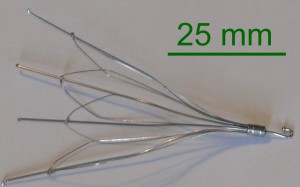Case Study Suggests Possible Cause of IVC Filter Failure

An increasing number of patients have filed product liability lawsuits regarding the alleged defects of inferior vena cava (IVC) filters, which are designed to capture blood clots as they pass by in the bloodstream. Although the IVC filters are intended to prevent complications in patients prone to developing blood clots, some patients have claimed that they caused far more damage than they prevented. Now, a recent case study from Baylor University Medical Center may shed a little light on exactly what is happening inside the body when an IVC filter fails.
A look at the IVC filter study
In the study, the authors describe the case of a 29-year-old woman who presented with liver failure from hepatitis. She then developed other complications and underwent surgery. Because of her increased risk of blood clots, her doctors placed an IVC filter and eventually discharged her.
Six years later, the patient had to undergo a computed tomography (CT) scan of her abdomen and pelvis for an unrelated medical complaint. The medical images revealed that two of the IVC filter struts had fractured. Because the patient was no longer considered to be at an increased risk of blood clots, surgeons removed the filter and fractured pieces to prevent them from causing further damage.
The surgeons described the retrieval surgery as “complicated.” Afterward, the study authors analyzed the fractured pieces and determined that “in vivo motions transmitted from the IVC to the filter” caused the fracture. The authors went on to describe how this transmitted motion from the blood vessel to the filter could “result in one of two fracture modes: high-cycle metal fatigue secondary to accumulated damage and metal overload sustained from acute stress.” The authors concluded that if the filter is in an undesirable position at the time of its insertion, it should be removed and a new one inserted in its place.
Recommendations from the FDA
This study from Baylor University Medical Center is unlikely to have a significant effect on ongoing litigation efforts by patients who have received IVC filters and suffered complications. This is because the study was a case study of one patient, not a clinical study that involved numerous patients. However, jury members are indeed likely to pay attention to safety communications issued by the FDA regarding IVC filters.
In May 2014, the FDA issued an update to its original safety communication from 2010. The agency stood by its previous recommendation to surgeons and physicians that advocated for the removal of IVC filters as soon as the patients were no longer at risk of pulmonary embolism (PE). Specifically, the FDA guidance stated, “If the patient’s transient risk for pulmonary embolism has passed, the risk/benefit profile begins to favor removal of the IVC filter between 29 and 54 days after implantation.”
IVC filter lawsuits
Some of the allegations raised in IVC filter lawsuits against defendant C.R. Bard claim that the company marketed the devices without adequately disclosing the risks of leaving the IVC filters in place on a long-term basis. Not only can fractured filters result in serious or life-threatening complications like myocardial perforation and arrhythmias; they can also be harder to retrieve the longer they are left in place.
- Baylor University Medical Center, Inferior vena cava filter removal after prolonged dwell time of 2310 days, http://www.baylorhealth.edu/Documents/BUMC%20Proceedings/2016_Vol_29/No_3/29_3_Shah.pdf
- FDA, Removing Retrievable Inferior Vena Cava Filters: FDA Safety Communication, http://www.fda.gov/MedicalDevices/Safety/AlertsandNotices/ucm396377.htm


 Resources
Resources
 Resources
Resources
